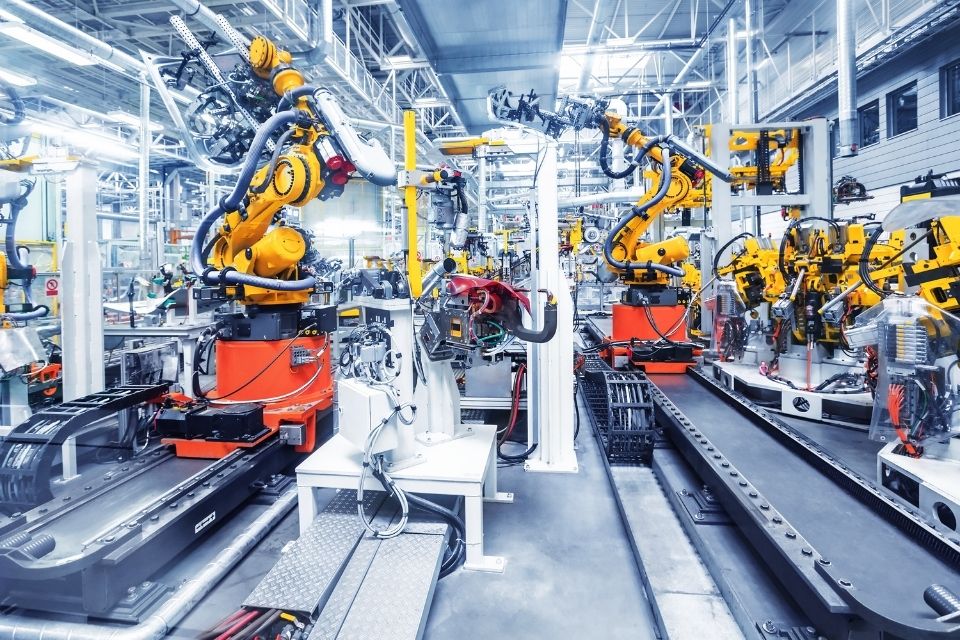Imagine this: a single piece of machinery fails unexpectedly on a busy production day. The entire operation comes to a grinding halt. It can lead to costly downtime, delays, and expensive repairs.
In fact, according to recent studies, unplanned downtime can cost manufacturers up to $260,000 per hour. Equipment failure is one of the most disruptive issues in the manufacturing industry. It directly affects productivity, safety, and financial performance.
Preventing equipment failures in manufacturing is key to maintaining efficiency and reducing operational costs. By implementing proactive steps, you can significantly minimize the chances of machinery breakdowns.
Now, let’s look at some proven yet effective strategies to keep equipment running smoothly.
1. Choosing the Right Supplier
One of the most overlooked aspects of equipment maintenance is the quality of the components used. The reliability of your parts is directly tied to the reliability of your machinery. Therefore, partnering with the right supplier is essential.
- Supplier Reliability: A reputable supplier offers a broad range of high-quality products from well-established brands. For example, selecting ball bearings from a trusted supplier ensures that the equipment operates smoothly and with minimal friction. This assurance reduces the risk of failure. High-quality bearings last longer, handle greater stress, and are designed for tough industrial environments. All these factors contribute to equipment reliability.
- Supplier Expertise: Many suppliers also provide expert consultancy services. They help businesses choose the right products that match their specific operational needs. This ensures optimal performance and prevents equipment mismatches that could lead to breakdowns.
2. Regular Maintenance and Inspection
Proactive maintenance is one of the most effective ways to prevent equipment failures. It ensures that potential issues are caught before they become major problems.
- Preventive Maintenance: Schedule regular inspections and maintenance checks. Early identification of wear and tear on components can prevent more significant damage down the line. This type of maintenance reduces the chances of sudden failures and costly emergency repairs.
- Monitoring Key Components: Particular attention should be paid to components like bearings, belts, and seals. These parts are subjected to constant stress and wear. Ongoing work makes them more prone to failure if not regularly monitored. Routine checks allow you to replace parts before they cause larger equipment malfunctions.
3. Optimize Equipment Operating Conditions
Maintaining optimal environmental and operational conditions can significantly extend the lifespan of equipment and prevent failures.
- Temperature and Humidity Control: Machinery operates best within specific temperature and humidity ranges. Excessive heat or moisture can accelerate the wear and corrosion of critical components like bearings and seals.
- Proper Load Management: Avoid overloading machinery beyond its designed capacity. This can strain components and lead to premature failure. Ensure equipment is operated within its recommended limits for best performance.
4. Training and Skill Development
Your equipment is only as reliable as the people operating and maintaining it. Training your workforce on proper equipment handling and early problem detection can make a significant difference. Here are some tips to do it:
- Employee Training: Operators and maintenance staff should be trained to identify early warning signs of component failure. This could include unusual noises, excessive vibrations, or visible wear. Being able to detect these issues early allows for timely intervention.
- Preventive Skill Enhancement: Conduct regular workshops and internal training sessions on risk management and equipment care. This approach will help staff learn preventive maintenance techniques. This proactive approach ensures that smaller issues are handled before they escalate into full-blown machinery failures.
5. Data-Driven Maintenance (Predictive Analytics)
As technology evolves, manufacturers now have access to tools that can predict equipment failures before they occur. This feature gives you a significant advantage in risk management.
- Using IoT and Sensors: By incorporating IoT devices and sensors into your machinery, you can monitor the health of critical components in real-time. These technologies track factors like temperature, vibrations, and operating speed to detect potential issues.
- Predictive Analysis: Advanced algorithms can analyze this data to predict when a component, such as a bearing, is likely to fail. This allows you to replace it before it causes downtime or damage to the entire system. Predictive maintenance is a forward-thinking strategy. It essentially helps to minimize risk and maximizes operational efficiency.
Binding It All Together!
Preventing equipment failures in manufacturing is crucial for maintaining efficiency and reducing costs. Key strategies include partnering with reliable suppliers for high-quality components, regular maintenance checks, and proper training for staff to detect early signs of wear.
Using predictive analytics with IoT sensors can help identify potential issues before they cause breakdowns. By following these proactive steps, manufacturers can minimize downtime. This approach can enhance productivity and save money in the long run.

